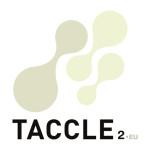PROJECT Curricular Areas: Visual arts and ICT. Learning Opportunities & Skills: Video editing, image editing, audio editing and online sharing. About this Unit: The objective of this unit is for students to investigate and describe their locality from the perspective of street or graffiti artists. They will work towards the creation of a short video that conveys the Full Article…
Mosaics and Pixels
Age 11yrs Ease ** Overview: This activity allows learners to create and develop a real mosaic using coloured stones/card squares to represent pixels. It helps them understand the theory of image production by studying the history of mosaic and the representation of electronic images produced by printers which operate using pixels Full Article…
Classical Compositions
8-12yrs Ease * Overview: Learners investigate how to improve the composition of photographs and to understand which are the main aesthetic rules of composition through a digital analysis of the most famous images of statues, paintings and photos by some of the most important artists in history. With the aid of a computer you can Full Article…
Legobots
Here’s a a great lesson for the more confident amongst us courtesy of our Italian partners. Ages 11+ Overview: Learners build small robots with pieces of LegoNext allowing them to understand the basic principles of programming and mechanics. Strict logic is used to plan a machine that will then be available and used by children through Full Article…
Let’s go into the city
Lesson plan from Italy on Transport… During the morning students will have to carry out the following activities and/or purchases: A newspaper (news stand), A piece of pizza/snack (pizzeria), Exercise book (stationery store), A pair of socks (underwear), A map of the city (tourist office), Leaflet for trip (travel agency), Train schedule for trip (train Full Article…
Small scale construction
Lesson ideas for Technology from Italy… Students use CAD or similar to design a simple building Students work in groups of 4/5 people with LEGO blocks to make small scale models of simple buildings. The geometric shapes are analysed and designed. Then the students study the proportions in relation to real sizes. The students then Full Article…





 English
English Nederlands
Nederlands Deutsch
Deutsch Italiano
Italiano Español
Español Português
Português Română
Română Cymraeg
Cymraeg